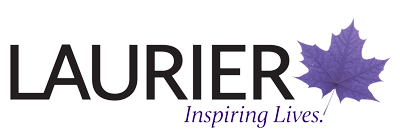Step 2: Select a Topic and Draft a Research Question
Once you have established what the assignment is asking you to do, it is time to decide how you will respond. Select and refine your topic, make it more specific to focus the scope of your assignment, then examine the topic.
Select a Topic
Your instructor typically provides the assignment’s topic and your job is to understand, refine and respond using a conventional academic form; however, you can also be given more freedom to choose your own topic. If you are selecting your own topic, check out the following tips:
- Be sure your topic is relevant to your course and make connections between the information you are learning in class and your tentative topic.
- Choose something you are interested in learning about and avoid obvious and common topics. A compelling topic not only piques the interest of your instructor, but also maintains your interest in writing about it.
- Follow all other assignment requirements carefully to ensure you address the topic appropriately.
- Meet with your instructor to discuss your topic to confirm it is appropriate.
Refine Your Topic
Begin with a Research Question
Pose a research question and think about what you want to know about your topic. A research question condenses and puts the main point(s) of the topic you are addressing into question form.
A research question...
- Extends beyond personal opinion or preference.
- Can be viably researched and argued with documented (textual) evidence.
- Is specific in the information it seeks (what?).
- May indicate temporal scope (when?).
- Identifies the people, historical figures, or fictional characters upon whom it concentrates (who?).
- Names the real or imagined places it discusses (where?).
- Specifies the causal problem it investigates (why?).
A research question is not...
- A thesis statement.
- Set in stone: rather, anticipate that key questions may change, taking shape as you work through the assignment.
To formulate your research question, consider the following:
- The Goldilocks principle:
- Questions that are too narrow in scope = insufficient material to develop adequately.
- Questions that are too broad in scope = far too much material to discuss in enough detail.
- Just right research question = just enough scope to develop a compelling case.
- Brainstorm several research questions and revise until the question you created is specific enough.
- Your question should be significant not just to you but also to your community of readers (the audience).
- Look for small issues that form part of bigger themes. Distil a large concern down to one element that you think is integral and explore just that element.
- Note problems, contradictions, inconsistencies, and paradoxes in the assigned topic. These points of contention are great areas to mine for potential research questions. Does your topic include a point about which there is a lot of controversy? Try to craft a research question that explores this point.
- Consider what you already know and have read about your topic. Does the published literature lead you to any ideas about questions that have been important on this topic?
Account for Different Assignment Types
Make sure you account for differences in assignment type when you create your research question. For example, if your assignment is to review a book, your research question should address both the content of the book and your evaluation of it (e.g. “Is the argument X made by Y in her book Z a persuasive one and why/why not?”).
For more tips on formulating a research question, consult section three of the Laurier Writing Centre handout, “How to Write a Strong Thesis Statement.”
Topic Selection: Beyond the Basics
Reflecting upon the questions that are relevant to your topic and creating your own questions should lead you to think about the larger significance of the research question you wish to pose. Ask yourself what you want your readers to understand about this topic. Demonstrating significance is a point of motivation for readers (including your instructor) to care about the topic and think about its intellectual and everyday implications.
Continue to develop the structure of your paper further by crafting an outline and research strategy in Step 3.

